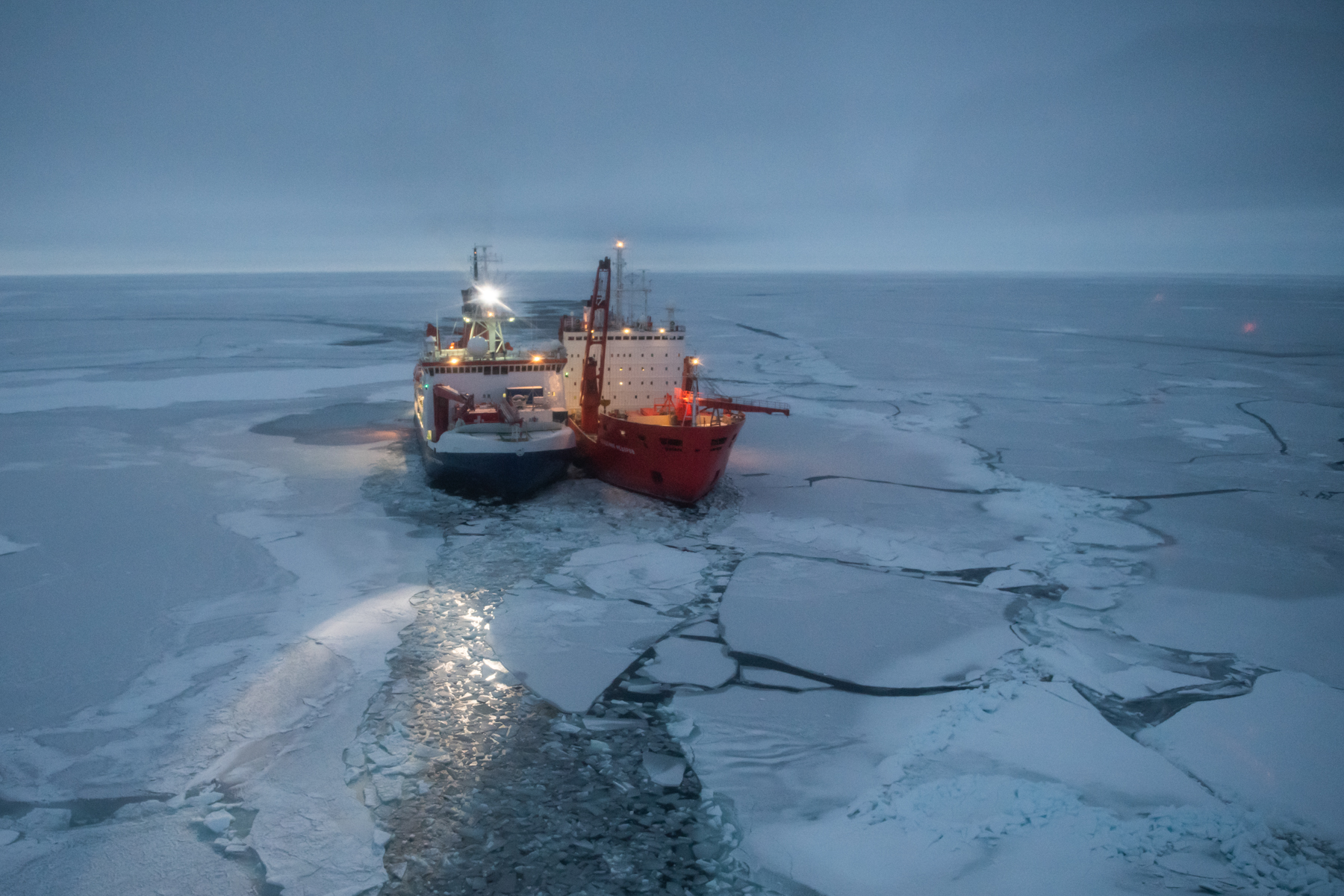After finding its floe, a drifting Arctic research icebreaker settles in for polar night
The RV Polarstern has attached itself to sea ice, and will drift through the dark Arctic winter conducting groundbreaking research as part of the MOSAiC Expedition.

In the shadow of the North Pole, the RV Polarstern has slowed its pace in the Central Arctic, attaching itself to a drifting ice floe a few kilometers in diameter.
The German icebreaker, accompanied by the flagship of the Russian polar research fleet, is set to drift with the ice floe for the next year, perhaps traveling 2,500 kilometers.
The search for the ideal ice partner took several days and measurements of ice thickness. The chosen floe ranges from about a half-meter thick to a few meters.
“Several ice floes were surveyed via helicopters from both icebreakers and by teams of scientists taking measurements on ice before a decision to pick this one was made,” researcher Janek Uin of the Brookhaven National Laboratory, wrote in a blog post Thursday.
Matt Boyer, who like Uin works on research equipment that measures clouds and aerosol particles, said the ice floe will become an extension of the vessel.
“Everyone on board is anxious to start setting up their instrumentation on the ice and start data collection. We are also working against the clock, as we are rapidly losing daylight hours. In just a few days, the sun will no longer reach above the horizon,” Boyer wrote Tuesday.
The choice of the proper ice floe was important because measurements gathered on the drifting ice will be the heart of the research work for the next year.
The expedition, known as MOSAiC, which stands for Multidisciplinary drifting Observatory for the Study of Arctic Climate, is the largest Arctic expedition ever.
Earlier this year, scientist Matthew Shupe, co-coordinator of the project, said the ship and the ice frozen to it will be like a giant floating Arctic lab, drifting about 7 kilometers a day.
Shupe is a research scientist with the Cooperative Institute for Research in Environmental Sciences at the University of Colorado. He has spent most of the past several years working to pull the expedition together internationally.
“Nearby the ship will be an ice camp with many measurements that should be made on the ice itself and away from the influences of the ship. Extending out for 15-plus kilometers in all directions will be a distributed network of observations, including numerous buoys and autonomous stations, that will allow us to look at the spatial variability of key measurements across the various regional conditions,” he said.
The ice has to be thick enough to be safe for people and equipment and thin enough so that it allows for research work within the ice and in the water below.
“The thin ice is what we really want to study scientifically — but we also need to make sure everyone stays safe,” he said.
The researchers will drill into the ice to take water measurements and perform a wide variety of experiments that examine how all aspects of the physical environment interact and change over time.
While some researchers are focused on bacteria or fish, others are to run tests on the atmosphere, clouds and conditions within the ice.
The goal, Shupe said, is to develop better climate
modeling capabilities and understand how conditions are changing.
“Unlike most experiments, MOSAiC will bring together a multi-disciplinary team that examines so many aspects of the Arctic system together and at the same time to better understand their interactions,” he said. “Ultimately it is these interactions that must be better represented in cutting edge models.”
“We simply must have improved models so we can better understand the trajectory of the changing Arctic climate system,” he said.
“In the end, we’ll play our hand, and the Arctic will play its hand,” Shupe told another interviewer. “And we’ll do our best to read the conditions well enough to get the right play so we can be there for a full year and operate successfully.”
For Shupe, this project is a culmination of a dream that began to take shape in 2008 when he was doing research on the Swedish icebreaker Oden near the North Pole.
“I thought that the measurements we were making at the time were simply too short in duration to really understand what was happening with the sea ice.”
In that regard, he hopes the work over the next year will mark a sea change.
Dermot Cole can be reached at [email protected].